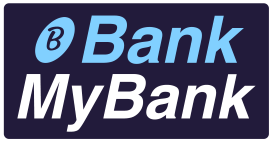A savings account is a deposit account designed to hold money that you don’t need right away or don’t plan to spend right away. A checking account, on the other hand, may allow you to write checks or make purchases and ATM withdrawals with a debit card.
Savings accounts allow you to set aside funds for certain purposes and objectives. You may, for example, open a savings account to hold your emergency cash or a down payment savings account before purchasing a home.
While savings accounts provide convenient access to your funds, the number of times you can use them is limited. Until recently, the Federal Reserve Board’s Regulation D limited you to six withdrawal transactions per month.
- Transfers from a checking account to an overdraft
- Transfers of payments over the internet (EFTs)
- ACH (automated clearing house) transfers are a type of electronic money transfer.
- Phone, fax, computer, or mobile device transfers
- Phone, fax, computer, or mobile device wire transfers
Read More: UAE banking: What you should know
Transactions using check or debit card
Given the current level of banking penetration, practically everyone who earns a living has a savings account. Your bank account where you deposit money is known as a savings account. A savings account is used to store money and make transactions, but few people realize that it has numerous other advantages. What are the essential features of a savings account?
Extremely liquid
Savings accounts are where people keep their money. Money can be deposited into this account, and money can be paid out of it to anyone. Any bill payment can be made from a savings account as well. This account also receives several sorts of government subsidies, and standing instructions for all types of payments can be set up so that money is automatically taken on the due day. Because of these features, a savings account is as liquid as currency.
Multiple payment options are available.
A user can use debit cards, checks, and internet banking to make transactions using a savings account. All banks’ mobile apps can be used to conduct transactions with a savings account. You can also keep track of how many transactions you made from your savings account, how much you paid, and how much money you received from other sources.
There must be a minimum balance.
There are various types of savings accounts, each of which has a distinct minimum balance requirement. Some savings accounts, on the other hand, do not have a minimum balance requirement. You must pay a fine if the minimum balance is not maintained in the savings account in which the minimum balance is required.
Interest is paid on money that has been parked.
In a savings account, easily Quarterly you can earn interest on your money, half-yearly, and annual interest payments are made. Different banks offer various interest rates for various time periods. It is currently around 3-4 percent, however this fluctuates throughout the year. A savings account pays less interest, so if you wish to keep your money in your account for a longer term, a fixed deposit will pay you more.
Read More: How to Transfer SBI Account from One Branch to Another Branch
For tax purposes, earned interest is treated as income.
The interest collected on the savings account, most crucially, is taxable. If the amount of interest received from a savings account exceeds Rs 10,000, you would have to pay tax on it under section 80TTA of the Income Tax Act. Under 80TTB, the ceiling for senior citizens is 50 thousand rupees. The amount of tax you will pay is determined by your tax bracket.
So, if you want to earn a high rate of interest on your money, choose an FD or an RD. However, unlike a savings account, these instruments are less liquid. But don’t worry: some banks are offering savings accounts with interest rates of 7% or higher. Let’s look at these financial institutions.
Interest rates range from 3.5 percent to 7.3 percent at Jan Small Finance Bank.
The AU Small Finance Bank pays interest at a rate of 3.5 percent to 7%.
You can get interest rates ranging from 4% to 7% with ESAF Small Finance Bank.
Interest rates at Equitas Small Finance Bank range from 3.5 percent to 7%.
Interest rates range from 4% to 7% at Ujjivan Small Finance Bank.




